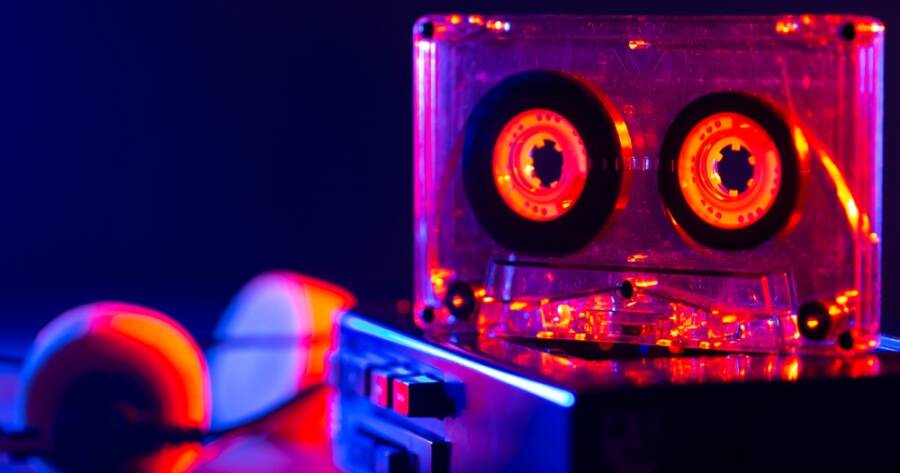In an age when almost every song is streamed in seconds, the humble cassette tape has made a surprising comeback. Once dismissed as a relic of the 1980s, it’s now becoming a fresh way for artists and listeners to reconnect with music. Across the United States, small cassette labels are thriving, giving fans something physical to hold, collect, and cherish. It’s proof that even in a digital world, analog still speaks to something deeply human.
The Tangible Appeal of a Physical Format
For decades, music moved steadily away from the physical — from CDs to downloads to streaming. Yet many listeners have started craving a different experience: one that feels personal and real. A cassette offers that sense of connection.
Unlike a playlist or file, a tape has weight, artwork, and a tactile rhythm. You flip it, rewind it, and press play with intention. This small ritual turns listening into an act rather than a background habit. Cassette labels have tapped into this feeling, offering limited-edition releases that double as art objects. Independent artists, especially those in lo-fi, punk, and experimental genres, see cassettes as a way to stand apart from the endless digital noise.
A DIY Revival in the Music Scene
One reason cassette culture is booming again is that it’s easy to produce tapes at a small scale. Unlike vinyl pressing, which requires large minimum orders and expensive setup, cassettes can be duplicated quickly and cheaply. That low barrier has made them a favorite among independent musicians and micro-labels.
A new wave of small cassette labels has emerged across cities like Portland, Austin, and Chicago. These labels often operate out of home studios, releasing small runs of 50 or 100 tapes. The approach fits perfectly with the DIY ethic — direct, local, and personal. Musicians can release their work without waiting for streaming algorithms or big-label approval. Fans, in turn, get collectible releases that feel authentic and limited, not disposable.
Nostalgia Meets Modern Creativity
Of course, nostalgia plays its part. Many people who grew up making mixtapes or discovering albums in dusty record shops now find comfort in the format’s familiar hiss. The cassette’s imperfections — the slight warble, the occasional drop in clarity — have become part of its charm. In an era of flawless streaming, that imperfection feels more alive.
But this revival isn’t only about looking backward. Younger artists and fans are adopting cassettes with fresh energy. Labels design bold, handmade artwork. Some tapes come with digital download codes, merging old and new worlds. Even major acts occasionally release special cassette editions as a nod to the format’s growing subculture.
The Role of Collectibility and Community
Cassettes have also become key objects for community and connection. Collectors trade and discuss them online, while tape fairs and swap events are reappearing in cities across the U.S. This renewed interest has created a small but thriving ecosystem — artists, fans, and hobbyists who keep the format alive.
Two simple truths help explain why:
- Scarcity drives value. A limited tape run creates a sense of ownership that digital files can’t match.
- Physical media builds memories. When you hand someone a tape, it becomes a shared moment — not just a link in a message.
This sense of exchange has turned cassettes into a cultural bridge between generations. Parents show old players to their kids; teens hunt for used decks online. What started as a curiosity has grown into a symbol of intentional listening.
The Technology Still Matters
It’s not just nostalgia keeping the cassette alive — it’s also the accessibility of the technology. Cassette decks, Walkmans, and boomboxes are being restored, refurbished, and sold again. Several audio companies have even released new portable tape players, catering to a generation that never owned one before.
Meanwhile, duplication services have modernized. Small labels can now produce tapes with better fidelity and longer shelf life, without losing the analog warmth people love. This has helped legitimize the cassette not as a gimmick but as a creative tool.
The Human Touch in a Digital Era
Cassettes aren’t replacing streaming, but they offer something digital music can’t — a personal connection to sound, story, and craft. Their revival isn’t about resisting technology; it’s about slowing down to feel it differently. Every hiss, click, and rewind holds a trace of effort and emotion that no algorithm can reproduce.
As cassette labels continue to grow, they remind us that music isn’t just content — it’s an experience. And sometimes, the best way forward is by pressing play on the past.

